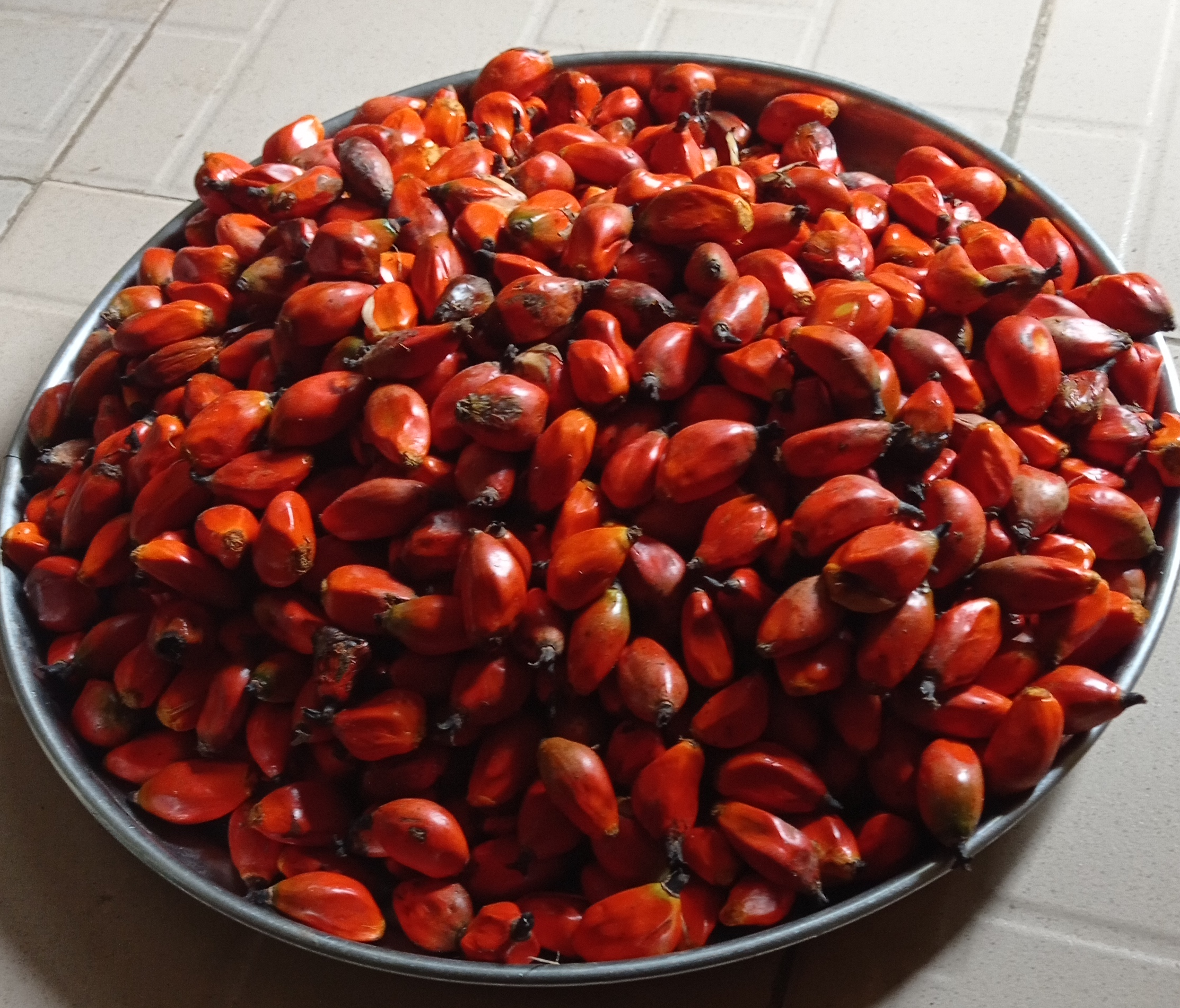The processing of palm oil involves the following steps; reception of fresh fruit bunches from the plantations, sterilizing and threshing of bunches to free the palm fruit, mashing the fruit, and pressing out the crude palm oil. The crude oil is further treated to purify and dry for storage and export.
Palm oil processing steps
- Harvesting of Palm fruits: harvesting palm fruits from the plantation involves the collection of ripe palm fruit from the farm. A trailer or wheelbarrow can be used to transport the fruits to the processing unit depends on the size of the farm.
- Weighing of fruits with its bunch: on getting to the processing unit of the palm oil section, bunches of fruits is weighed on a scale, and data is recorded. The essence of taking proper records is to evaluate and monitor the farm’s performance. You will know if your palm plantation is underproducing or not.

- Threshing of fruits from its bunch: threshing can be done using in different ways, it is the removal of the oil palm fruits from its bunches. A hand tool is mostly used in local production.
- Winnowing: this is the separation of dirt, shafts, and some other unwanted materials from the fruits. The operation can be done locally whereby the fruits are gently poured in front of a standing rotating fan and the fan blows off the impurities from the fruits.
- Fruits sterilization: cooking of the fruits in a jar is done here. After separating the fruits from unwanted materials, they are poured into the heated boiler with enough water for sterilization under a given temperature.
- Digestion of fruits: After cooking the fruits, they are removed from an outlet in the boiler and transfer to the digester. The digester help to break the fruit’s fiber to enhance extraction.
- Pressing of fruits: pressing is normally done using a manual control presser, when pressing the fruits, oil is been extracted and collected in a drum.
- Cooking of extracted oil: the oil extracted undergoes cooking till it stops forming.
- Storage of oil: after cooking, it is allowed to cool down before transferring into the drum. We store our oil in the drum covered with white polythene before packaging.
- Packaging of oil: empty bottles and kegs are gotten from the market, label branded stickers before putting oil inside, and then seal using aluminum foil.



